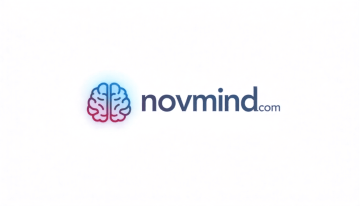This pillar guide explains, in practical terms, how to plan, implement, and scale AI automation to accelerate revenue, reduce costs, and unlock productivity—without sacrificing customer experience.
Table of contents
What is AI automation?
AI automation combines traditional automation—rules that trigger tasks—with artificial intelligence, which learns from data to make better decisions over time. Instead of simply “if X then Y,” an AI-enabled workflow evaluates context, predicts outcomes, and adapts as new information arrives.
The shift from manual to intelligent workflows
Think of manual workflows as assembly lines with people moving items from station to station. Traditional automation is the conveyor belt that speeds things up. AI automation adds a smart supervisor that reroutes items, prioritizes urgent work, and anticipates bottlenecks before they occur.
How AI enhances traditional automation
AI enhances rules with pattern recognition. It scores leads based on behavior, drafts emails that reflect a customer’s preferences, flags outliers in finance data, and analyzes support conversations to surface root causes. Over time, models improve accuracy, delivering compounding returns as volume grows.
Why AI automation drives business growth
Time efficiency
AI automation removes repetitive, low-impact work such as data entry, routing tickets, or batching campaign sends. When teams reclaim hours each week, they can invest those hours into product improvements, customer research, and creative testing that actually drives revenue.
Scalability without more hiring
Most growth stalls because demand outpaces headcount. AI automation scales core processes—like lead qualification or order operations—so that output increases without proportional hiring. This protects margins while supporting expansion into new segments or geographies.
Cost reduction and ROI
Automation reduces error-prone handoffs and compresses cycle times. The result is fewer rework costs, faster revenue recognition, and healthier cash flow. Many teams see positive ROI within a quarter once a single high-leverage process is automated end-to-end.
Core areas transformed by AI automation
Marketing and sales
Lead scoring and predictive funnels
With behavioral data, AI ranks prospects by purchase intent and surfaces the next best action. Sales reps spend less time on unqualified leads and more time on high-probability opportunities. A practical example is using a platform like ActiveCampaign to combine event tracking with automated journeys that reflect each buyer’s stage. (Complementary article idea: “ActiveCampaign for Intelligent Email Automation.”)
Personalized campaigns
AI segments audiences beyond demographics—factoring in recency, frequency, content consumed, and channel preferences. Emails, ads, and on-site messages adapt in real time. This improves open rates, lowers acquisition costs, and boosts lifetime value.
Customer engagement
Chatbots and virtual assistants
AI assistants provide instant answers to common questions, capture lead details, and route complex issues. A tool like Drift AI can qualify visitors on the spot and book meetings automatically, keeping the pipeline moving while human agents tackle nuanced requests. (Complementary article idea: “Drift AI for Real-Time Lead Qualification.”)
Always-on customer experience
Because AI does not sleep, customers receive help across time zones and channels. This reduces wait times, increases satisfaction scores, and protects retention—especially during launches and seasonal spikes.
Workflow and productivity
Task automation with AI tools
Cross-app orchestration is where much of the hidden friction lives. Platforms such as Zapier AI move data between systems, trigger intelligence-driven actions, and standardize processes with version control. (Complementary article idea: “Zapier AI for Smarter Cross-App Workflows.”)
Smarter project management
AI predicts risk, recommends assignees based on capacity, and generates progress summaries. Managers gain visibility without constant status meetings, and teams get clear, adaptive priorities.
Finance and operations
Fraud detection and risk control
Machine learning models flag anomalous transactions, supplier changes, and chargeback patterns. This reduces losses and tightens compliance with minimal manual review.
Invoice and compliance automation
AI extracts fields from invoices, matches them to POs, and reconciles discrepancies. Automated reminders and audit trails shorten the time to payment and simplify reporting.
Creative work
AI in writing and design
Drafting long-form content, generating headlines, and proposing layouts can all be accelerated with AI assistance. The goal is not to replace creative judgment but to compress first-draft time and expand ideation range.
Video and multimedia automation
Automated editing, captioning, and format resizing help teams ship more assets per campaign without adding headcount. Consistent, on-brand output becomes the default rather than the exception.
Benefits by business size
Entrepreneurs and startups
Founders can automate onboarding emails, lead qualification, and support FAQs to operate like a larger team. This creates breathing room for customer discovery, fundraising, and product fit.
Small and medium businesses
SMBs gain enterprise-grade capabilities—predictive analytics, journey orchestration, and finance controls—at subscription prices. Automation also documents processes so that hiring and training become faster when growth arrives.
Enterprises
At scale, AI automation unifies data across regions, standardizes controls, and reduces operational variance. Leaders get earlier signals on demand shifts and can reallocate resources proactively.
How to choose the right AI automation tool
Integration
Prioritize tools with native connectors for your CRM, data warehouse, help desk, billing, and ad platforms. Strong APIs and webhooks are non-negotiable for long-term flexibility.
Capabilities
Look for features that go beyond triggers: predictive scoring, content generation, anomaly detection, and reinforcement learning. Verify that models can be tuned to your data, not just generic benchmarks.
Scalability
Your volumes will grow. Ensure pricing, throughput, and concurrency limits will not force a costly migration during a crucial growth phase.
Return on investment
Tie each candidate tool to a measurable outcome—hours saved, revenue accelerated, errors reduced. Model the payback period and set thresholds for expansion to new use cases.
Implementation roadmap
Audit processes and pick candidates
List recurring tasks across marketing, sales, support, finance, and operations. Score each by frequency, time consumed, error impact, and customer sensitivity. Select one or two high-leverage candidates for a pilot—ideally where data is plentiful and outcomes are easy to measure.
Build a pilot and measure impact
Define success metrics up front: response time, conversion rate, cost per ticket, or days sales outstanding. Roll out to a limited segment, monitor results for two to four weeks, and compare against the baseline. Document edge cases and human-in-the-loop rules so exceptions are handled gracefully.
Scale and govern responsibly
Once the pilot clears your thresholds, expand gradually. Establish owners for model performance, feedback loops for continuous improvement, and policies for fairness, privacy, and data retention. Keep humans in control of escalation, overrides, and policy decisions.
Trends shaping the future
Hyper-personalization
Expect more granular experiences: pricing, recommendations, and messaging tailored down to an individual’s context, not just a segment’s average behavior.
Autonomous workflows
Entire processes—from lead capture to billing—will run with minimal human intervention, while dashboards surface exceptions that truly need attention.
Low-code and no-code adoption
Business users will design and iterate automations without submitting IT tickets, accelerating experimentation while central teams provide guardrails.
AI with IoT
Real-time signals from devices will trigger supply chain and service automations, shrinking downtime and improving utilization across physical operations.
Ethical and compliant AI
Regulators and customers are demanding transparency. Responsible data use, model explainability, and audit trails will be built into procurement checklists and vendor reviews.
Case studies
Ecommerce brand increases conversions
A mid-market retailer implemented intent-based email sequences and on-site chat qualification. Abandoned cart recovery and personalized promotions increased conversion rate by 18% and email revenue by 22% within one quarter.
B2B saas shortens cycle
A software provider used predictive lead scoring and automated routing. Sales reps focused on high-intent accounts, reducing average sales cycle length by 28% and improving win rate by 11% across the mid-market segment.
Healthcare improves triage
A telehealth startup deployed an AI assistant to triage common inquiries and collect structured intake data. First-response time dropped from 20 hours to under 10 minutes, while clinician utilization improved by 15% due to better case preparation.
Common myths debunked
AI will replace all jobs
AI replaces tasks, not entire roles. It eliminates drudgery so people can focus on customer empathy, creative strategy, and complex problem solving—areas where humans excel.
AI is too expensive
Subscription pricing and usage-based models put powerful capabilities within reach of small teams. The key is prioritizing high-impact processes that produce quick wins.
Only for technical teams
Modern platforms offer intuitive builders and templates. Technical partners remain important for data and governance, but day-to-day iteration increasingly happens within business units.
Conclusion
AI automation is a force multiplier for growth. It scales the work your team already does well, shortens the distance between signal and action, and frees time for the activities that compound—customer understanding, product quality, and creative testing. Start with a clear goal, run a contained pilot, and expand with governance. The sooner you operationalize AI automation, the sooner you unlock durable advantages in speed, consistency, and customer experience.
Notes for your content hub: This pillar intentionally does not link out to supporting or complementary articles. Mentions of tools such as ActiveCampaign, Drift AI, and Zapier AI are contextual only. Your supporting and complementary pieces should link back up to this pillar to consolidate topical authority.
FAQs
What should I automate first?
Target high-frequency, low-risk tasks with clear outcomes—think lead routing, meeting scheduling, abandoned cart outreach, or invoice reminders. These produce measurable wins and build confidence for broader rollouts.
Do I need a data scientist to get value?
Not to start. Many platforms ship with strong defaults and low-code builders. As automation expands, a data specialist helps with governance, instrumentation, and model tuning for edge cases.
How do I measure ROI on AI automation?
Define a baseline, then track time saved, cycle time reduction, error rate, conversion lift, or revenue acceleration. Translate these into dollars saved or earned. Most leaders also measure qualitative gains like customer satisfaction and employee focus.
Is customer experience at risk with automation?
It improves with the right guardrails. Maintain human-in-the-loop escalation, review AI outputs regularly, and give users a clear path to a person. Use automation to eliminate delays, not to avoid accountability.
Which tools are good starting points?
For many teams, a lifecycle platform like ActiveCampaign, a conversational assistant such as Drift AI, and a cross-app orchestrator like Zapier AI cover the first 80% of use cases. Expand from there as needs become more specialized.

